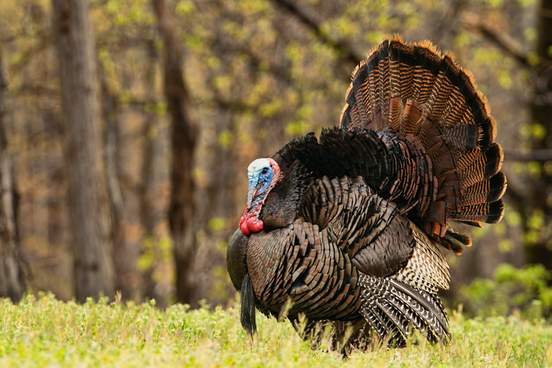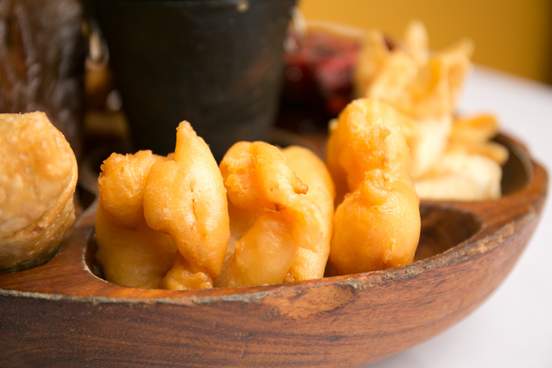
Offal
Definition:
the viscera and trimmings of a butchered animal removed in preparing it for market or for consumption
Example:
Love it or hate it, offal—organ meat including liver, heart, and kidney—is worth considering. Considerably cheaper than muscle meat and widely available in supermarkets, it can be cooked in ways that mellow out the strong, iron-rich flavour some people find off-putting. Eating offal also helps reduce food waste and potentially helps the environment; if more people opted for offal instead of meat, research suggests, fewer animals would need to be reared.
— Sue Quinn, BBC, August 2022
Note:
Don’t let the word fool you; like most foods, offal can be great depending on how it is prepared. And of course, as long as people have prepared animals for food, they have eaten not only their flesh but their organs as well—for flavor, nutrition, and to let as little as possible go to waste. In its original sense, offal refers to something that has fallen or been cast away from some process of preparation or manufacture, and it has been used to describe not only the viscera and trimmings of a butchered animal, but such things as the stalks and dust from tobacco leaves, the less valuable portions of an animal hide, and the by-products of milling grain.

Turducken
Definition:
a boneless chicken stuffed into a boneless duck stuffed into a boneless turkey
Example:
I cooked my first turducken for a Thanksgiving gathering last year. It was astonishingly easy to execute and the birds turned out so moist and flavorful...
— David Watsky, CNET.com, 11 Nov. 2022
Note:
According to many who have tried it, something magical happens when you combine turkey, duck, and chicken into a most opulent dish. According to equally as many, we presume, something less-than-magical happens when you combine the words turkey, duck, and chicken into a portmanteau, for reasons we shan’t explain further. Turducken was first noted in print in 1982, although it may have been in use before that. The dish is a cousin of ballotine, a less familiar food item consisting of deboned meat, poultry, or fish stuffed with seasoned meats or vegetables, rolled and tied into a bundle shape, and usually braised. It’s also a product of engastration, which the OED defines as “the action of stuffing one fowl inside another.” We feel stuffed just thinking about it.

Haggis
Definition:
a traditionally Scottish dish that consists of the heart, liver, and lungs of a sheep or a calf minced with suet, onions, oatmeal, and seasonings and boiled in the stomach of the animal
Example:
[Roxane] Gay is a keen cook and frequently posts her attempts at putting together various recipes on her Instagram story. As she is due to visit Scotland for the first time, The National asked if she had any plans to try Scottish delicacies like haggis. Gay joked that the ban on haggis to the US, due to the offal contained in the recipe, was because Americans are “weak”. “I would feel more inclined to enjoy the vegetarian haggis, but it’s not on my list. I don’t have the fortitude for haggis, but I respect it,” she added.
— Abbi Garton-Crosby, The National (Glasgow, Scotland), 1 Mar. 2023
Note:
Poor haggis, perennial gustatory punch line of popular movies and television from The Simpsons to The Big Bang Theory, Ratatouille to Lost. Granted, the traditional Scottish dish may be an acquired taste to say the least, but we wager the hag in haggis isn’t doing it any favors, at least on this side of the pond, as it may conjure visions of witches stirring a cauldron of bubbling gruel. However, that supernatural hag comes from the Middle English word hagge, meaning “demon,” while haggis instead comes from hagese, and is possibly related to the verb haggen, meaning “to chop.”

Spotted Dick
Definition:
a pudding made with suet and currants or raisins
Example:
Spotted dick is a popular British pudding served with oozing globs of creamy custard. Unfortunately, even the world’s best spotted dick isn’t something I’d want to put in my mouth.
— Alice Lahoda, Buzzfeed, 27 Nov. 2022
Note:
Now that you’re finished with your main course, can we interest you in some spotted dick? No? Would it help if we offered this dessert to you by its other name: spotted dog? Still no? Well, those are the two names we have for this luxurious, quintessentially British steamed pudding, so take your pick: dick or dog. The dick in spotted dick is thought to be the common nickname for “Richard,” which itself may have arisen (cough) as rhyming slang for “Rick.” The upshot of all of this of course is that “Dick spotted spotted Dick” is a perfectly cogent and grammatical thing to say. If you’re an American looking up recipes for spotted dick online (always, and we mean always, include “recipe” in your search terms, by the way), you’ll note that it looks more like a light-colored fruitcake than the sweet, gloppy dessert we call pudding (and it also looks rather like a Dalmatian, hence its alternate moniker). That’s because they call all kinds of things “pudding” over there—even sausage! But we’re not here to judge, just to giggle and nudge each other in the ribs with our elbows.

Wort
Definition:
a sweet liquid drained from mash (crushed malt or grain meal steeped and stirred in hot water) and fermented to make beer and whiskey
Example:
When Krista Scruggs began working on her first vintage last year under her ZAFA Wines label, she ran into a serious roadblock when 95 percent of the feral vineyard she intended to harvest succumbed to a Japanese beetle infestation. “I was working in Vermont,” says Scruggs, “and fortunately there are plenty of apples here, so I decided, rather than lose the entire harvest, I’ll make up the grape loss by co-fermenting with apples.” Scruggs is one of a growing group of beer, cider and winemakers experimenting with co-fermentation, the practice of fermenting two or more fermentable sugar sources—wort, apples and/or grapes, etc.—in a single vessel simultaneously.
— Justin Kennedy, PunchDrink.com, 8 Nov. 2018
Note:
Though the two words are often pronounced the same way, wort, referring to the formative stage of many a tasty adult beverage, is etymologically distinct from wart, referring to a skin lesion. Wort comes from the Old English word wyrt, and its use for brewing liquid was likely influenced by wyrt’s other meanings including “herb,” “plant,” and “root.” When you consider that early ales, before the popularization of hops, were brewed with everything from spruce tips to yarrow to ground ivy, this makes a certain amount of sense. Delicious, boozy, non-wart-related sense.

Mullet
Definition:
any of a family (Mugilidae) of chiefly marine bony fishes with an elongate rather stout body
Example:
Festival goers can taste fried mullet served all around the festival, participate in a mullet toss, attend a blessing of the fleet event, as well as check out street vendors, live music, food, kid’s activities, and more. The Mullet Festival is the oldest festival on the Crystal Coast, starting in 1954, as a way to celebrate the arrival of the modern era with the completion of the White Oak River Bridge. Local mullet fisherman held a fish-fry potluck to bring the town together, and it’s been going ever since.
— Emily Cervarich, CBS-9 WNCT (Greenville, North Carolina), 5 Oct. 2022
Example:
In the States, if you want the (great-for-frying) fish referred to in some quarters as “Biloxi bacon,” you simply order “mullet,” though it is referred to as “striped mullet” or “grey mullet” elsewhere in the world. Conversely, if you want “either of two red or reddish food fishes (Mullus surmuletus and M. barbatus) of the Mediterranean Sea and the warmer Atlantic coasts of Europe and northern Africa that are noted for their ability to change color” then you should ask your server for red mullet, known outside of the U.S. simply as “mullet.” Got it? Though grey and red mullet are unrelated species, however, all are “business up front, party for the taste buds.”

Screw Pine
Definition:
any of a genus (Pandanus of the family Pandanaceae, the screw-pine family) of tropical monocotyledonous Old World trees or shrubs with slender palmlike stems, often huge prop roots, and terminal crowns of swordlike leaves
Example:
In 1845, nearly a year into a punishing 3,000-mile trek through the Australian interior (then still terra incognita to outsiders), the Prussian naturalist Ludwig Leichhardt attempted to eat the fruit of Pandanus spiralis, a tree that huddled at the edges of watering holes. Pandanus is a genus of tropical evergreens that grow in Southeast and South Asia, Oceania and Africa, with leaves that tend to rise and arch in a whorl around the stem and bulbous fruit, whose polyp-like knobs evoke a pineapple’s armor—hence the English name, screw pine.
— Ligaya Mishan and Esther Choi, The New York Times, 6 Sep. 2021
Note:
In recipes and restaurants, one is more likely to encounter the word pandan than the rude-sounding screw pine, and specifically in reference to one particular screw pine, Pandanus amaryllifolius. That pandan, according to writer Giao Chau in a great explainer on Eater.com, is the only one of 700 species of screw pines “with fragrant leaves (another related variety produces perfumed flowers that are distilled into kewra essence, a flavoring in North Indian cuisine).” Chau goes on to note, tantalizingly:
Pandan’s mighty power is hidden in its leaves: When they’re bruised and cooked they release an intriguing aroma variously described as floral, grassy, or sweet and musky. Pandan can star in a dish as well as play a supporting role to accentuate other ingredients. It whispers in the fluffy rice grains of nasi lemak, a popular dish in Singapore and Malaysia featuring coconut rice served with crispy anchovies and peanuts alongside sambal; in the Filipino dessert salad buko pandan, pandan announces itself loud and clear in the form of a vibrant green jelly.
— Giao Chau, Eater.com, 27 Feb. 2023

Mountain Oyster
Definition:
the testis of a bull calf, sheep, boar, or other animal used as food
Example:
You can eat these even if you have a seafood allergy—as long as you’re not squeamish. Rocky Mountain oysters—also known as prairie oysters, cowboy caviar, and Montana tendergroin, among other things—are eaten all over the West and parts of the Midwest. They are bull calf testicles, breaded and fried and usually served with a dipping sauce.
— The Virginian-Pilot (Norfolk, Virginia), 20 Jan. 2023
Note:
Sometimes euphemisms can end up sounding yuckier than the terms they replace, and although we doff our cap at whoever came up with tendergroin, to borrow a phrase, “we just can’t” with these. No matter how much verbal dipping sauce you cover animal testes with… aaargh.

Pupu
Definition:
an Asian dish served as an appetizer or main course and consisting of a variety of foods (such as egg rolls, spareribs, and fried shrimp)
Example:
About a decade ago in China, Annie Parisi was a tour leader, helping travelers from around the world discover her hometown of Tianjin near Beijing. … She was 28 and on a six-month visa in the United States when she first met Joe Parisi in Las Vegas. … When Joe Parisi, then a table manager at Foxwoods Resort Casino, would bring her to Chinese restaurants in New England, she was shocked by their menus. Items like pu pu platters, crab rangoon, and orange chicken did not originate in China, but are American inventions, she explained. She started diving into cookbooks, videos, and family recipes to teach herself how to make the authentic dishes she had growing up.
— Alexa Gagosz, The Boston Globe, 26 Oct. 2022
Note:
Such is the way of language as it moves around that globe that borrowings sometimes have unintended similarities with untoward terms in the borrower’s lexicon. At some point in the mid-20th century, English users began using the Hawaiian word pūpū, meaning “appetizer,” to refer to sampler platter of all kinds of delicious delectables, despite it being reminiscent of… well, you know. To be fair, plenty of English words are not exempt from this phenomenon, whatsoever. Just be extra careful with your pronunciation if you ask someone in Hungary for a cookie is all we’re saying.

Aspic
Definition:
a clear savory jelly (as of fish or meat stock) used as a garnish or to make a meat, fish, or vegetable mold
Example:
Aspics were a quintessential part of any Soviet feast, in particular New Year’s dinner. Each household would have its own trusted recipe for this cold appetizer: some used only pigs’ trotters while others preferred beef shanks or cows’ heads. True connoisseurs, however, always mixed different kinds of meat. The thick stock that resulted from cooking the meat would be poured into bowls and taken outside. A domestic fridge just wasn’t cold enough for the aspic to set, but winter temperatures of minus 15-20ºC were ideal. Minutes before the Kremlin clock struck midnight, the bowls would be brought back inside, placed on the table, and the party would begin.
— Olga and Pavel Syutkin, The Calvert Journal, 9 Oct. 2015
Note:
Did you know there’s an entire Facebook group dedicated to people sharing their favorite aspics? It’s true, and the reason it hasn’t run afoul of that website’s terms of service is because the aspics in question are all firm, jiggling… foodstuffs, of the sort that became something of an art form in post-WWII American cookery (typing “perfection salad” into your favorite search engine will not leave you disappointed). Aspic is a direct borrowing from French aspic meaning “asp,” and the OED notes that French lexicographer Paul-Émile Littré suggested the jelly came to be called aspic because it is “froid comme un aspic” (cold as an asp).





